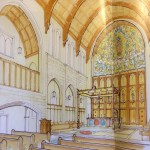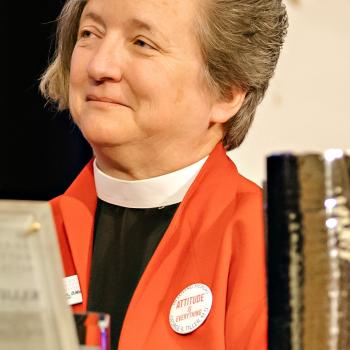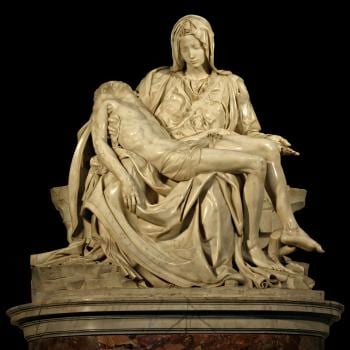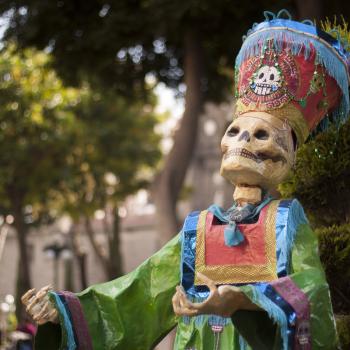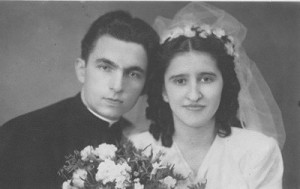
In my earlier posts here and here I discussed the practical aspects of having married priests.
There is a basic flaw, however in only discussing this issue with a regard to the practicalities.
This is because there are simply too many variables to make a strong case one way or the other for or against married priests. What works in one culture may not work in another. What works in one diocese may not work in another. What works for one family may not work for another. The practicalities are too many and too varied to make a decision on this matter based on practicalities alone.
My basic conclusion on practical matters is that it can work if people want it to work. If the priest, his wife, his family, his parish and his bishop want it to work then the practicalities will be taken care of. Stop and think for a moment. Are there not practical problems with celibate priests? Of course. It’s part of being human. What do we do? We try our best to solve the practical difficulties. That’s life.
If Catholics really want a married priesthood then they will make it work. That will mean making sacrifices. Is everyone prepared to make the sacrifices necessary to have married priests? Is the priest? Is his wife? Is his family? Is the bishop? Are the parishioners?
Since the practicalities can be resolved if there is a will, then we should really consider the other reasons for or against married priests.
The theological dimension is the real decider, and this is tied up completely with the nature of both marriage and priesthood.
Remember in the sacramental economy Holy Matrimony and Holy Orders are in the same category. They are the sacraments of service.
Joke: Married priest: “Both Holy Matrimony and Holy Orders? That’s about right. She gives me orders every day…..”
Where there is a joke there is always truth.
There’s something in that, and not bossy wives, but the sense that there is a unique link between the two sacraments, and it has to do with the Nuptial mystery.
From Eden to Revelation we see God’s plan for humanity expressed in the symbolism of the nuptial mystery. God creates Adam and Eve as the first married couple. Christ affirms this. But in the Old Testament the prophets us the nuptial imagery to reveal God’s love. God is the bridegroom and his people are the bride. Christ echoes this in his frequent use of marriage imagery throughout the gospel. St Paul picks it up in his references to marriage and makes it explicit in Ephesians when he speaks of Christ and his bride the church. This imagery is summarized in the “Marriage Supper of the Lamb” in the Book of Revelation and then in the liturgy. (Brant Pitre’s book Jesus the Bridegroom: The Greatest Love Story Ever Told explicates this theme beautifully.) Marriage is woven in and through the mystery of redemption from beginning to end and then constantly through the liturgy of the church.
The real reason for priestly celibacy therefore is a visual and living representation of Christ’s love for the church. As Christ is the bridegroom of the church, so the priest is married to the church. The priest fulfills therefore a deeper living symbolism in his being a representative of Christ to the church. A married priest is unable to this in the same way.
The celibate therefore reveals to the whole church what it means to be completely wedded to Christ’s church. In return the married reveal to the celibate what that marriage means. It means a daily self giving to the spouse which brings forth the fruit of a new generation. So the married and the celibate reflect to one another the depth of the meaning of the two sacraments of service.
However, in our modern, utilitarian and unpoetic world this sort of talk doesn’t cut it. The imaginative aspect of our hearts and minds has been dulled. We don’t see things this way and do not see the unity of the symbolism and the interplay of roles and functions in the drama of salvation.
All we see is, “Isn’t it a shame Father can’t get married!” Which is code for “Poor Father can’t have sex….”
You may very well ask, “If this symbolism is so important why does the church allow people like you to be ordained anyway?”
It’s because the symbolism isn’t that important. It’s only symbolism. Even if it reflects and reveals doctrine it is not doctrine. Furthermore, because it is symbolism it is flexible. Symbolic arguments can be made both ways.
Just as you argue that the priest represents Christ who is married to the church you could say the married priest represents more fully the integration of the two sacraments of service. Together with his wife he illustrates the fullness of marriage and the fullness of priesthood. He reveals within the unity of his marriage and the unity of his wife and his unity with the church a solidarity that unlocks a deeper mystery, that all of us who are married are expected to be totally committed to Christ and his church and that we do this within and through our marriages.
The picture is of husband and wife moving together to a shared higher goal of union with Christ and as they both move closer to Christ they mover closer to one another, then as their love of Christ is fulfilled their love for one another is also fulfilled.
See how it goes? It continues to be a fascinating and complex question and arguments both practical and theological can be made on both sides.
That’s why we allow the Bishops in unity with the Holy Father to decide.
After all the discussion is over you want my humble opinion?
I wish the church would allow older married men to be ordained and that the Vatican delegates this to local bishops conferences to work out whether they want to do this and how they are going to implement it.
Ordaining older married men means many of the practical problems will be overcome. It would also mean that the unity and permanence of their solid marriage would serve as a good example to the church and confirm the mystery of ordination and the mystery of marriage as both being good. It would also mean that celibacy was still the norm and was valued.
But you can see the problems…the question arises “What exactly is an ‘older’ man?” and perhaps we would then have no young vocations because men would elect to get married, have a family and then apply for ordination…
I guess the debate will go on.


